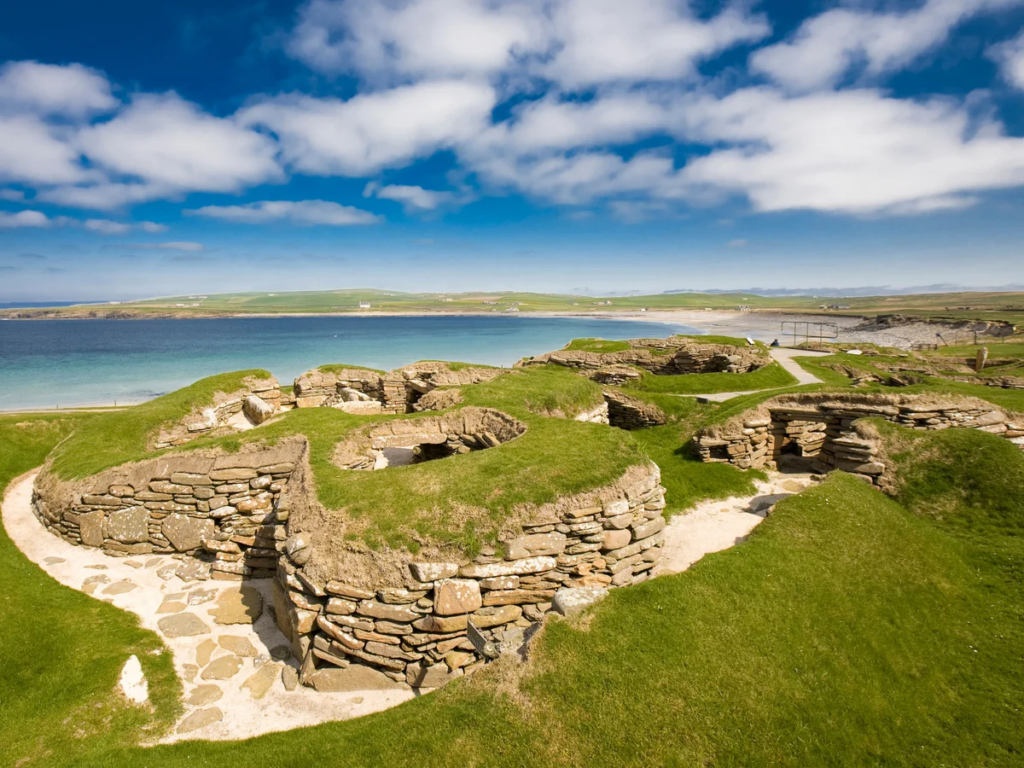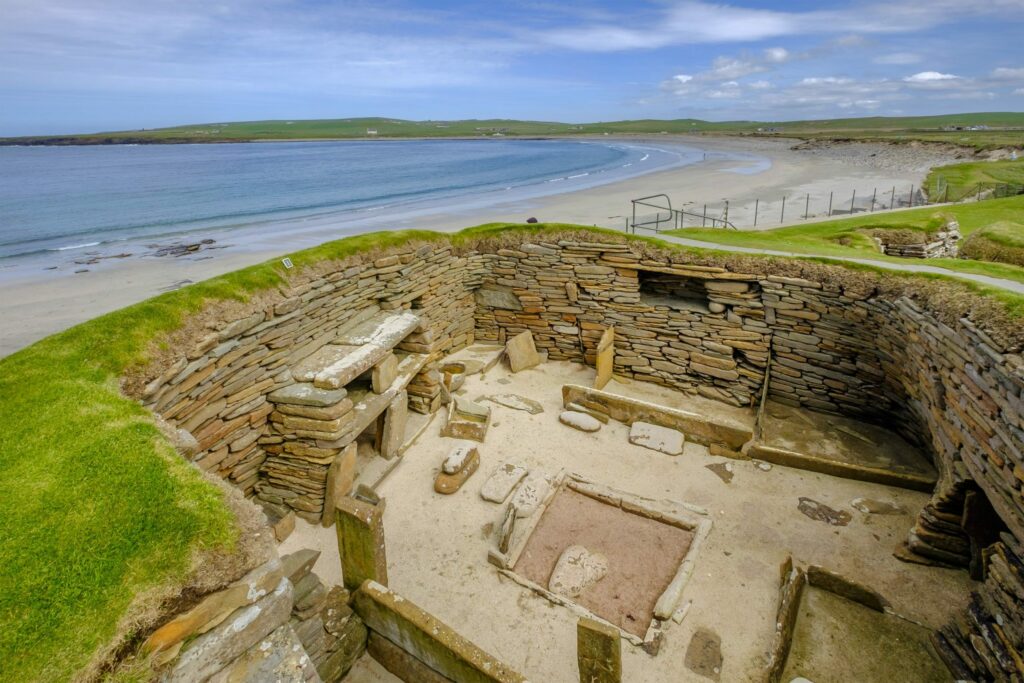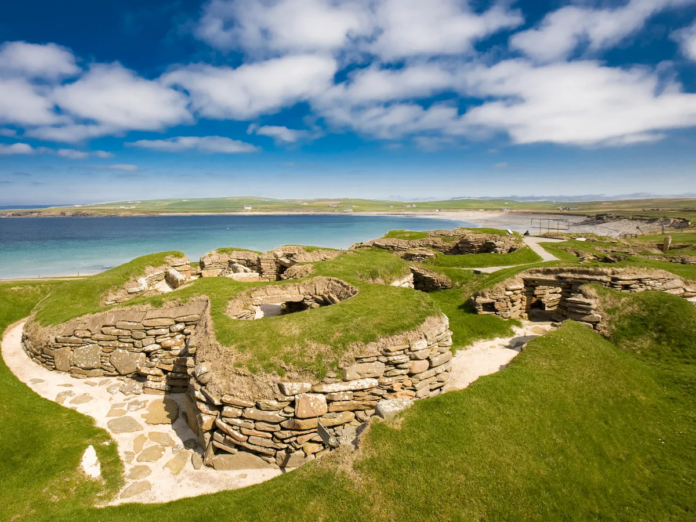A Hidden Gem Unveiled

In the windswept Orkney Islands of Scotland lies a remarkable testament to our Neolithic ancestors – the village of Skara Brae. Often called the “Scottish Pompeii,” this ancient settlement predates even the Great Pyramids of Egypt, offering us a rare glimpse into life over 5,000 years ago.
A Serendipitous Discovery

The story of Skara Brae’s discovery is as intriguing as the site itself. Tradition holds that in 1850, a violent storm stripped away centuries of sand and soil, revealing stone walls that had lain hidden for millennia. William Watt, the local landowner, began excavations, unearthing four stone houses and setting in motion a chain of archaeological investigations that would span over a century.
A Village Frozen in Time

As archaeologists peeled back the layers of history, they uncovered a village that seemed frozen in time. Ten stone structures, connected by tunnels and equipped with stone doors, emerged from the earth. Each house followed a common design, complete with stone furniture, hearths, and even indoor toilets – a level of sophistication that challenges our perceptions of Neolithic life.
Life in Neolithic Orkney
The Grooved Ware People

The inhabitants of Skara Brae, known as the Grooved Ware People for their distinctive pottery, were far from primitive. They were skilled farmers, hunters, and fishers, raising cattle and sheep while also harvesting the bounty of the sea. Their craftsmanship extended to tools, jewelry, and ornaments made from bone, rock, and stone.
A Community of Innovators

Some scholars have speculated that Skara Brae may have been more than just a village. Engraved stone balls found at the site led archaeologist Euan MacKie to propose that it might have been a community of astronomers, though this remains a subject of debate.
The Mystery of Abandonment
A Gradual Farewell

For years, it was believed that Skara Brae met a sudden, catastrophic end, buried by a fierce storm much like Pompeii. However, recent evidence suggests a different story. The village appears to have been abandoned gradually, for reasons that remain a mystery. Over time, sand and soil slowly reclaimed the site, preserving it for future generations to discover.
A Window to the Past
Today, Skara Brae stands as a UNESCO World Heritage Site, offering visitors a unique opportunity to step back in time. As you walk among the ancient stones, you can almost hear the whispers of our ancestors, their daily lives, hopes, and dreams preserved in this remarkable coastal village.

From its serendipitous discovery to its ongoing preservation, Skara Brae continues to captivate our imagination, challenging our understanding of Neolithic life and reminding us of the enduring ingenuity of the human spirit.

